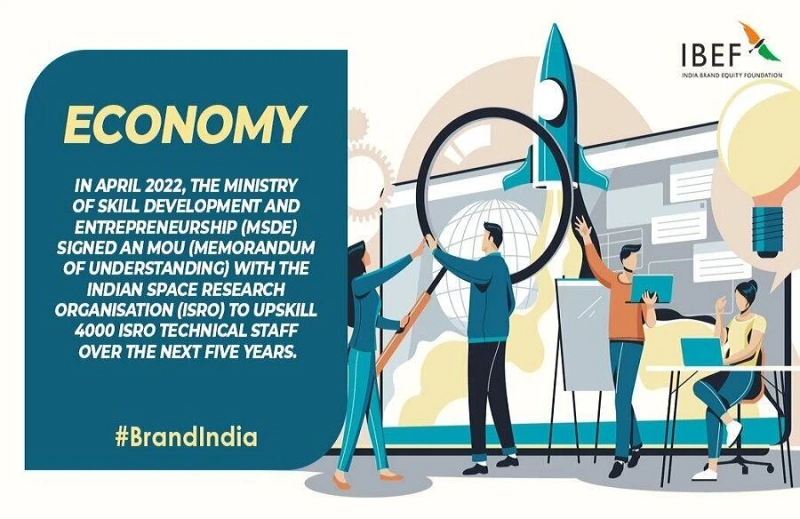In the vast and diverse landscape of India, there has long been a gap between formal education and meaningful employment. Many individuals complete their academic pursuits but often face challenges when it comes to securing quality job opportunities. This pressing issue prompted the Indian government to launch the Skill India Program, a key initiative under the Ministry of Skill Development and Entrepreneurship. With a primary focus on fostering skill development and employability, Skill India is at the forefront of bridging the chasm between education and employment. This article delves into the comprehensive approach of Skill India, encompassing initiatives such as the National Skill Development Corporation and Pradhan Mantri Kaushal Vikas Yojana.
The Skill India Initiative
The Skill India Program, led by the Ministry of Skill Development and Entrepreneurship, is a well-crafted response to the challenge of aligning education with employment. It represents a visionary strategy aimed at empowering the Indian workforce by equipping individuals with the practical skills needed for a competitive job market. Its core objective is to ensure that every Indian citizen possesses a valuable skill set, which could lead to job placement or entrepreneurship.
Analyzing the State of Education in India
The Current Education System
Traditionally, India\'s education system has centered around academic knowledge. While this system imparts theoretical understanding, it often falls short of developing the practical skills required by the job market. This discrepancy has been a significant factor contributing to the persistent gap between formal education and suitable employment opportunities.
The Mismatch Between Education and Employment
The gap between education and employment stems from the difference between what is taught in educational institutions and the skills demanded by the job market. This discrepancy underscores the need for programs like Skill India to play a pivotal role.
The Role of the Skill India Program in Bridging the Gap
Skill Development Programs
Under the Skill India Program, the National Skill Development Corporation (NSDC) spearheads numerous skill development programs. These programs encompass various vocational skills, such as plumbing, electrical work, IT proficiency, and many more. They are strategically designed to prepare individuals for in-demand job roles.
Skill Training and Vocational Education
Vocational education is a fundamental component of Skill India. It focuses on equipping learners with job-specific skills. For instance, a mechanic acquires the skills to repair vehicles, while a beautician becomes proficient in hairstyling and cosmetology. This type of training has the potential to lead to rewarding and gainful career opportunities.
Challenges and Criticisms
Funding and Infrastructure
One of the foremost challenges facing Skill India is the allocation of sufficient funds and infrastructure for its expansive programs. Establishing training centers, providing quality education, and ensuring the availability of skilled trainers all require substantial financial investments.
Quality of Training
Critics have expressed concerns regarding the quality of training within Skill India programs. Some argue that the training should be more closely aligned with industry requirements. Enhancing the industry relevance of these programs is a crucial step toward addressing these concerns.
Measuring the Impact
Employment Statistics
To gauge the effectiveness of Skill India, it is essential to examine employment statistics. This data reveals the percentage of program graduates who successfully secure employment, shedding light on whether Skill India is narrowing the education-employment gap.
Surveying Stakeholder Opinions
Gathering feedback and opinions from stakeholders, including students, employers, and trainers, provides valuable insights into the impact of Skill India mission. Their perspectives can guide further improvements and refinements in the program.
Future Prospects and Recommendations
Expanding Skill India\'s Reach
To maximize its potential impact, Skill India must strive to reach a broader demographic, including rural and marginalized communities. These are often the areas where skills development is needed most urgently.
Policy and Education Reform
Skill India should collaborate with the broader education system to integrate skill development into the regular curriculum. This involves enhancing vocational and practical training in schools and colleges, aligning educational content with industry requirements, and attracting government investment.
Conclusion
In conclusion, Skill India, operating under the Ministry of Skill Development and Entrepreneurship, stands as a promising initiative to bridge the persistent gap between education and employment in India. Skill India program endeavors to empower individuals to access meaningful employment opportunities by nurturing practical skills and employability. Nonetheless, it faces challenges such as funding and quality assurance. With concerted efforts, Skill India can significantly reduce the divide between education and employment, leading to a more employable and skilled Indian workforce. It represents a critical step towards fostering a more prosperous and equitable nation.



